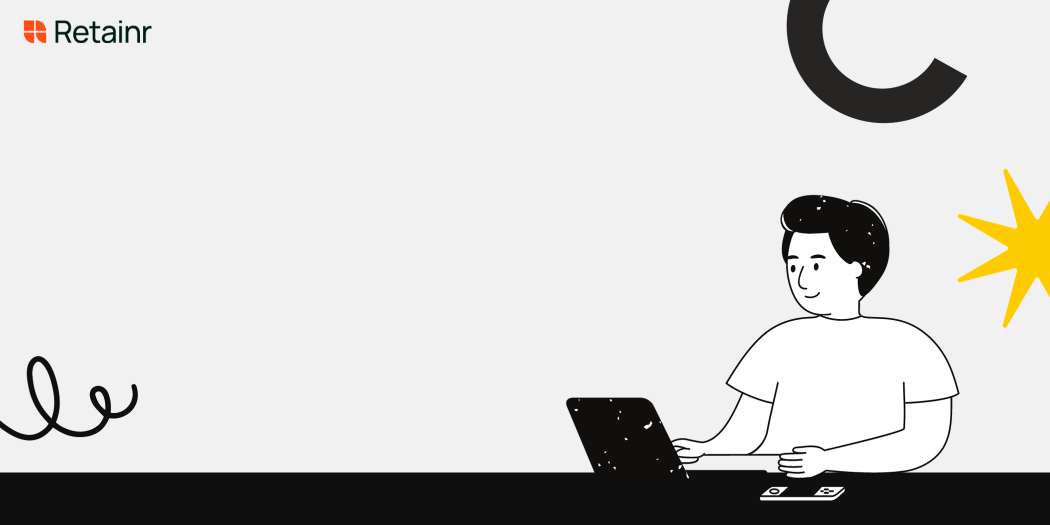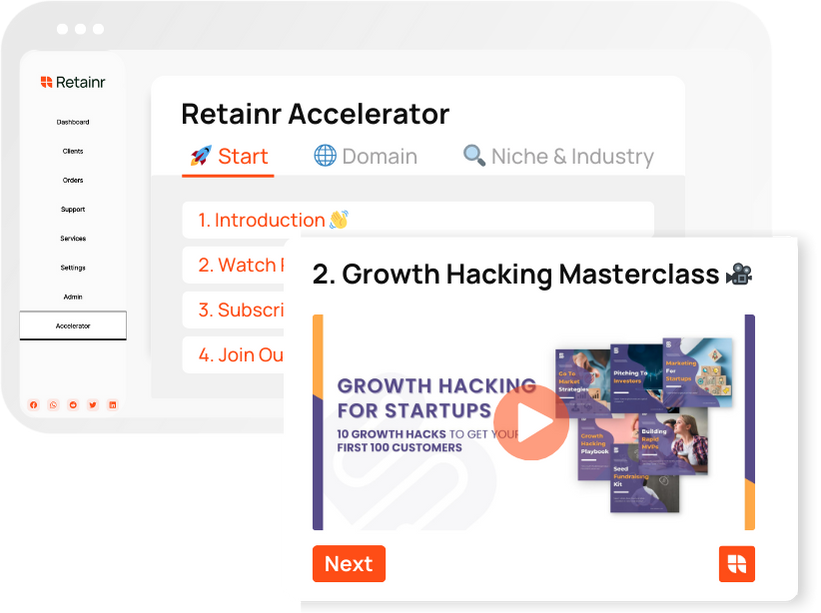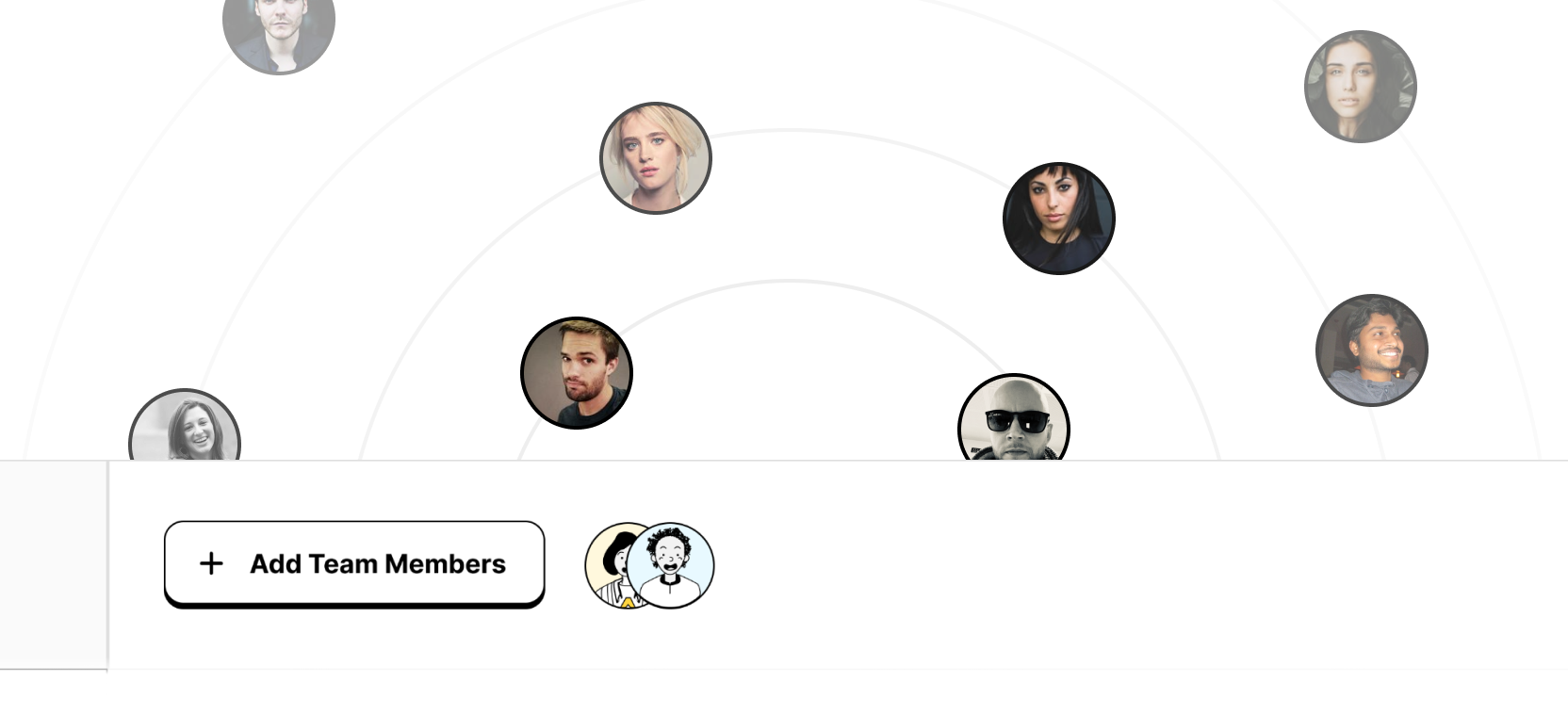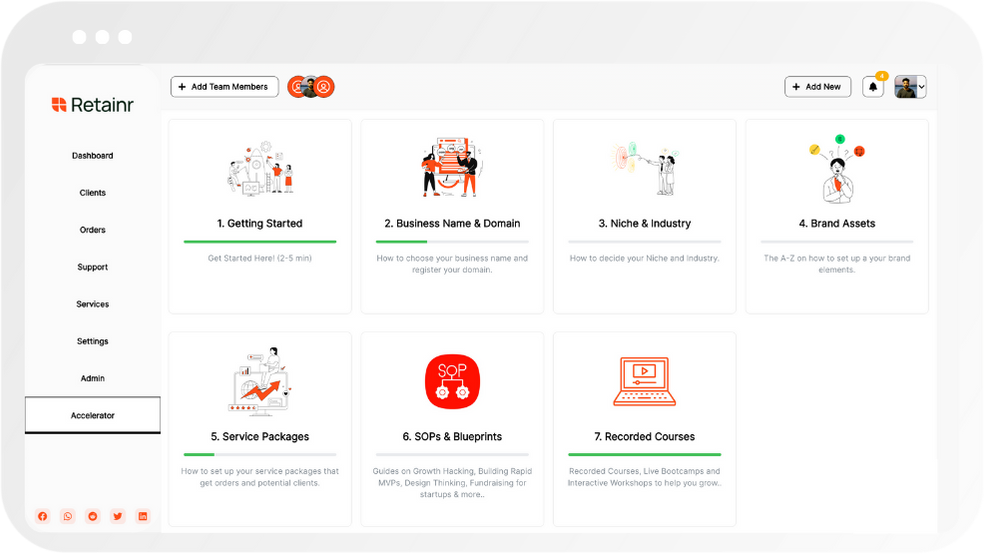
How to Create a Social Media Calendar to Plan Your Content
Build with Retainr
Sell your products and services, manage clients, orders, payments, automate your client onboarding and management with your own branded web application.
Get Started1. What is a social media content calendar and why is it important?
What is a Social Media Content Calendar?
A social media content calendar, also known as an editorial calendar, is a document or tool where you plan and schedule your social media content in advance. It's essentially a roadmap for your social media marketing strategy, clearly outlining what content will be published and when. This can include posts for platforms such as Facebook, Instagram, Twitter, LinkedIn, and more. It can be as simple as a spreadsheet or as complex as a software-based calendar designed specifically for this purpose.
Elements of a Social Media Content Calendar
A standard social media content calendar should include certain key components:
- Channels: This specifies the social media platform where the content would be posted.
- Dates and Times: This indicates when each piece of content will go live on the platform.
- Copy: This is the actual text of the social media post. It can be drafted directly on the calendar for convenience.
- Links: If the post includes a link to a website or other online resource, this is where it’s listed.
- Visuals: If the post includes images or videos, a reference to them could be included here.
- Status: To keep track of the posting process, this indicates whether the content is still in the idea phase, drafted, revised, approved, or scheduled.
Why is a Social Media Content Calendar Important?
A Social media content calendar is essential for several reasons. Firstly, it ensures that your content is well-distributed and timely, aligning with important dates and events. Secondly, by planning ahead, you can ensure consistency, which is key for maintaining engagement and reach on social media. Lastly, a content calendar helps track performance and adjust your strategy as needed.
| Benefits of a Social Media Content Calendar |
|---|
| It helps to keep your content organized and schedules in one place. |
| It ensures consistent posting, which can lead to more engagement and followers. |
| It allows for better collaboration with team members. |
| It helps you track the performance and success of your content over time. |
| It allows you to plan ahead for holidays and events. |
2. How do I start creating a social media calendar?
Step-by-Step Guide to Start Creating a Social Media Calendar
The creation of a social media calendar can be broken down into a systematic process. These steps help combine your content creation and social media strategies for an efficient workflow:
- Firstly, auditing your social networks and content is essential. The objective is to comprehend which topics and posts get the most engagement.
- Secondly, plan your content around your goals. If you aim to increase engagement, create content that encourages responses.
- Lastly, determine the best time to post on each social media platform. Use analytics tools such as Facebook Insights or Twitter Analytics to see when your audience is most active.
Key Elements for Your Social Media Calendar
A comprehensive social media calendar includes certain key elements. Each entry in your calendar should incorporate these components to ensure effective communication and easy monitoring:
| Date | Platform | Content | Link | Visuals | Engagement Track |
|---|---|---|---|---|---|
| When you plan to post | Which social site | The text of your post | URL to the full content | Associated image or video | Capture likes, comments, shares |
Useful Tools for Creating a Social Media Calendar
There are numerous tools available online that can help automate the process of creating a social media calendar. Here are a few to consider:
- Google Sheets or Excel: Simple and efficient. Lets you create customised calendars.
- Trello: It has built-in calendar functionality. You can input and shift content easily.
- CoSchedule: Designed for marketing teams to plan out social media, content, events, and emails.
- Hootsuite: Allows scheduling posts in advance across various social platforms and monitor responses.
3. Which platforms should be included in my social media calendar?
Choosing Social Media Platforms
When creating a social media calendar, all platforms which your business has an active presence on should be included. This might mean incorporating anything from Facebook, Twitter and Instagram, to LinkedIn, Snapchat, Pinterest, and Youtube. However, it's important to choose platforms which align with your business goals and audience demographics.
- Facebook: Ideal for a range of content – links, photos, videos. Targets a wide demographic but popularity is notably declining among younger users.
- Twitter: A fast-paced platform where short, snappy, informational content performs well. It’s used by all age groups, and is best for live updates and trends.
- Instagram: A visual platform for images and short videos. Suitable for lifestyle, art, food, personal, and other visually oriented sectors. Highly popular among younger users.
- LinkedIn: A platform primarily for B2B, perfect to share job postings, company news, and industry-related content. Mainly used by professionals from 25-49.
- Snapchat: A platform for short-lived content. Ideal for brands targeting younger demographics from 13-24.
- Pinterest: A platform where image, infographic sharing is common. It's popular among females between 18-49. Also, great for industries such as fashion, design, and DIY projects.
- Youtube: A video platform where you can share everything from short clips to full-length movies, to reach a wide array of demographics.
Aligning Platforms with Business Goals
While considering these platforms, it's important to match them with your specific business goals. If raising brand awareness among younger users is your priority, then focusing on Snapchat, Instagram, and Youtube might serve you best. For professional networking and B2B marketing, LinkedIn should be your go-to. It's also key to consistently review and tweak your social media strategy based on tracked results and shifting trends.
| Goal | Recommended Platform |
|---|---|
| Brand Awareness (Younger Users) | Snapchat, Instagram, Youtube |
| Professional Networking and B2B Marketing | |
| Visually Oriented Sectors | |
| Fashion, Design, and DIY Projects Oriented Sectors |
4. What type of content should I include in my social media calendar?
Types of Content to Include in Your Social Media Calendar
The key to a robust and effective social media calendar is diverse and engaging content. Here are several types of content you may want to consider:
- Promotional content - This includes product announcements, upcoming sales, discount offers and more. Remember to balance this with non-promotional content to avoid overwhelming your audience.
- Educational content - Share blog posts, how-to-guides, infographics and videos that offer value to your audience and showcase your expertise in the field.
- User-generated content - Customer reviews, testimonials, user photos, and social media contests can increase engagement and boost authenticity.
- Engagement content - Ask questions, create polls, or start discussions to interact with your audience and encourage social media engagement.
Mastering the Art of Thematic Planning
Another suggestion for planning your social media calendar is to create content based on daily themes. Here's an example of how a week might look:
| Monday | Tuesday | Wednesday | Thursday | Friday |
|---|---|---|---|---|
| Promotional Content | User-generated content | Educational content | Promotional content | Engagement content |
Keeping Up With Current Events
Finally, ensure your social media calendar includes content that aligns with key dates and events in your industry or area of interest. Here's what you might want to note:
- Industry-specific events - Trade shows, conferences, webinars, product launches or any other relevant industry events.
- Local events - Community happenings, city-wide events, local holidays and the like which might be of interest to your local customers.
- Global or national observances - Things like World Environment Day, Women's day, or national holidays. Remember to only participate in observances that align with your brand's values.
5. How frequently should I post on each social media platform?
Frequency of Posts on Various Social Media Platforms
Understanding the optimal posting frequency on different social media platforms is crucial in maintaining an active online presence. However, it's crucial to remember that the effectiveness of your posts depends more on their quality and relevance rather than their frequency. Let's break it down by platform:
- Facebook: According to studies, posting once per day is advised. This frequency gives you maximum engagement without annoying your followers.
- Twitter: Due to the fast-paced nature of tweets, it is recommended to post 3-5 times a day.
- Instagram: For most businesses, once a day or 7 times a week works well.
- LinkedIn: For professional networks like LinkedIn, one post per day during weekdays works best.
- Pinterest: Pinners prefer a lot of content. Aim for 3-30 new pins every day.
Balance between Frequency and Engagement
The main goal of your social media calendar should be to maximize engagement with your audience. To achieve this, a strategic posting schedule is required. Here's a quick glance at how frequently and when you can post.
| Social Media | Frequency | Best Times to Post |
|---|---|---|
| Once per day | 8:00 AM - 12:00 PM | |
| 3-5 times a day | 12:00 PM - 1:00 PM | |
| Once a day | 11:00 AM - 1:00 PM / 7:00 PM - 9:00 PM | |
| Once per workday | 7:30 AM - 8:30 AM / 5:00 PM - 6:00 PM | |
| 3-30 times a day | 2:00 PM - 4:00 PM / 8:00 PM - 1:00 AM |
Flexibility to Vary Posting Frequency
Although the above mentioned frequency schedule is a standard recommendation, it is important to remain flexible and adjust your posting frequency based on the response you're getting from your audience. The right frequency for you may differ from the guidelines due to various factors like industry, target audience, and geographical location. Therefore, investing time to understand your audience's behavior and preferences will further streamline your social media marketing strategy.
6. How can I organize my content on a social media calendar?
Organizing Content On Social Media Calendar
Organizing content on a social media calendar involves proper planning, tagging, and categorizing your content. This system allows you to keep track of what needs to be posted, when, and on which platform. Here are some steps you can follow.
- Create categories like blogs, videos, and images and then tag each piece of content accordingly. This helps when you need to find specific content quickly.
- Set up a regular posting schedule for each social media platform, and stick to it. This can be done through the use of tools such as Hootsuite or Buffer that allow you to schedule posts in advance.
- Ensure that you're also leaving room for real-time updates which aren't planned, but require immediate posting.
Using Tables In Your Social Media Calendar
Tables provide a visual structure to your social media calendar, making it easier to plan and manage your content schedule. Consider creating a table structure like below:
| Date | Platform | Content Type | Status | Notes |
|---|---|---|---|---|
| 01/01/2022 | Blog Post | Scheduled | Schedule for 8am | |
| 01/01/2022 | Image | Published | Post reached 1k likes |
Planning Content Ahead
Planning your content well in advance is a key aspect of a successful social media strategy. The aim is to always have high-quality, relevant content ready to post. Try to plan at least a month in advance, but be flexible to accommodate any last-minute changes or trending topics. Here are a few tips:
- Look for special dates or events relevant to your audience that you can create content around. This could include holidays, industry events, or product launches.
- Use a variety of content types to keep your audience interested and engaged. This could include blogs, videos, images, infographics, and polls.
- Allocate time each week to review and adjust your content calendar based on analytics or changes in your strategy.
7. Can I use a social media calendar for multiple platforms?
Multiple Platforms and Social Media Calendars
Yes, using a single social media calendar for planning and scheduling content across multiple social media channels is not only possible but also efficient. A comprehensive social media calendar allows you to view all your planned content across different platforms at a glance. This strategy helps minimize confusion, keep track of what is being posted where and ensure consistency in your brand messaging.
Steps to Use a Social Media Calendar for Multiple Platforms
The following steps can make the process of using a social media calendar for multiple platforms smoother:
- First, identify which social media platforms your target audience uses the most.
- Second, create separate columns or sections in your calendar for each of these platforms.
- Third, while planning your content, consider the type of content that works best on each platform and plan accordingly.
- Lastly, make sure to note the date, time, and platform for each post in your calendar.
A Sample Social Media Calendar Table
| Date | Platform | Content | Post Time |
|---|---|---|---|
| 01/04/2022 | Post about upcoming product launch | 10:00 AM | |
| 01/04/2022 | Tweet about a recent blog post | 12:00 PM | |
| 02/04/2022 | Share behind-the-scenes photos from the office | 09:00 AM |
The above table is a sample view of how you could possibly organize your social media content. It's important to remember that adapting and customizing to fit the ever-changing social media landscape is necessary to remain relevant and effective in your communication strategies.
8. What are some tips for effective social media calendar planning?
Tips for Effective Social Media Calendar Planning
Planning a social media calendar can be a daunting task. However, there are several tips that can aid in creating an effective calendar. The first and most important tip is to define clear objectives. Having well-defined, tangible goals is important in guiding the overall strategy of your social media calendar. Secondly, understand your audience. Your content should resonate with your audience and align with their values, interests and needs. Finally, consistency is key, make it a point to post regularly to keep your audience engaged.
Another valuable tip for social media calendar planning involves the utilization of social media management tools. These tools can help automate and simplify the process. For example:
- Buffer: Allows you to schedule posts for all social media platforms from one place.
- Hootsuite: Apart from scheduling, it provides performance analytics.
- CoSchedule: It's a marketing calendar that integrates with popular platforms like WordPress.
Choosing the right frequency and timing of posts can be instrumental in maximizing engagement. The following table provides a rough guide:
| Social Media Platform | Posting Frequency | Suggested Time |
|---|---|---|
| 1-2/day | 1pm-3pm weekdays | |
| 5-10/day | 12pm, 3pm weekdays | |
| 1/day | 7:45am, 10:45am, 12:45pm, 5:45pm weekdays | |
| 1-2/day | 8am-9am, 2am weekdays |
9. Are there tools or software that can help me create my social media calendar?
Choosing the Right Tools and Software
Using the right tools and software can make the task of building a social media calendar much more manageable. Social media management tools will allow you to get more detailed with your planning, schedule posts for the future, and monitor your progress. There are several reliable tools available that can cater to different needs and budgets. Here are a few that are popular among social media managers:
- Hootsuite: Allows you to manage multiple social media networks, schedule posts, monitor mentions, and track the success of your posts.
- Buffer: Facilitates post scheduling across various platforms and comes with analysis tools to measure performance.
- CoSchedule: Can help coordinate all your marketing efforts (from blog posts to social media) in one place and offers reusable templates.
- Trello: While not specific to social media, its capabilities for project management make it a useful tool for planning out your content.
Software Comparison
The following table summarizes some of the key features of these software to help you make a more informed decision. Each platform has its unique strengths so choose based on what fits your business needs the best.
| Tool | Scheduling | Analytics | Price |
|---|---|---|---|
| Hootsuite | Yes | Yes | Free basic plan, paid plans from $19/month |
| Buffer | Yes | Yes | Free basic plan, paid plans from $15/month |
| CoSchedule | Yes | Yes | Plans from $14/month |
| Trello | No | No | Free basic plan, paid plans from $10/month |
Final Words on Tools and Software
In conclusion, the right software can streamline your social media management process and make your life easier. Deciding on the best one will largely depend on your specific requirements and budget. It's crucial to remember that tools and software are just aids—you still need to develop a solid social media strategy and create quality content to achieve success.
10. How can a social media calendar help me to plan my content efficiently?
Efficiency Gained from a Social Media Calendar
A social media calendar can significantly streamline your content planning process. There are primarily three ways in which a social media calendar can boost your efficiency:
- Organization: Calendars provide a visual representation of your planned content, making it easier to manage multiple social media platforms and ensure consistency.
- Scheduling: With a calendar, you can schedule posts ahead of time, eliminating the need for daily updates and allowing for optimal posting times.
- Strategy: Using a calendar, you can better allocate resources, monitor campaign progress, and evaluate strategies through a big-picture perspective.
Planning Content with a Calendar
Creating a social media calendar involves strategic planning. Several steps are involved in the process:
- Identify your target audience and their preferences
- Decide on the type of content to post
- Determine the frequency of posting
- Choose the ideal times for posting or scheduling
- Set aside time for regular review and adjustment
Example of Social Media Calendar
Here's how your social media calendar might look:
| Date | Platform | Type of content | Post time |
|---|---|---|---|
| 1/5/2022 | New product promo | 10:00 AM | |
| 1/5/2022 | Blog post share | 2:00 PM | |
| 2/5/2022 | Behind-the-scenes image | 6:00 PM |
Conclusion
Creating a Social Media Calendar: A Comprehensive Guide
Staying organized and maintaining a consistent online presence is crucial for businesses to succeed in today's digital world. One effective way to achieve this is by creating a social media calendar that helps you plan your content well in advance.
Creating a social media calendar involves several steps. Start by figuring out what content to post, which will depend primarily on your business and target audience. Researching popular trends within your industry and analyzing competitor content can also provide helpful insights.
Once you've identified the type of content to post, the next step is to decide when and where to post it. This step will ensure maximum visibility and engagement with your target audience.
An important aspect of a social media calendar is tracking the performance of your posts. Using analytics, you can gain insights on what types of content perform best on different platforms and at different times. This allows you to modify your strategy accordingly.
Creating a social media calendar may seem like a lot of work, but fortunately, there are tools available that can simplify the process. One such tool is Retainr.io, a whitelabel software that can help businesses sell, manage clients, orders, and payments with your own branded app.
With advanced features and easy-to-use interfaces, Retainr.io can take your content planning and business management to the next level. Get started today and see the difference a well-managed social media calendar can make to your business success.
Explore and enjoy the benefits of Retainr.io right now, click here to visit the website.
Boost Your Agency Growth
with Retainr Accelerator
Uncover secrets, strategies, and exclusive blueprints to take your agency's growth to the next level — from marketing insights to effective presentations and leveraging technology.

SOPs, Cheatsheets & Blueprints
Leverage 50+ SOPs (valued over $10K) offering practical guides, scripts, tools, hacks, templates, and cheat sheets to fast-track your startup's growth.
Connect with fellow entrepreneurs, share experiences, and get expert insights within our exclusive Facebook community.
.jpg)

Join a thriving community of growth hackers. Network, collaborate, and learn from like-minded entrepreneurs on a lifelong journey to success.

Gain expertise with recorded Courses, Live Bootcamps and interactive Workshops on topics like growth hacking, copywriting, no-code funnel building, performance marketing and more, taught by seasoned coaches & industry experts.

.jpg)

.jpeg)


